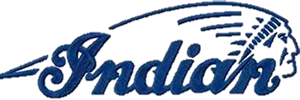

HOME
The rear suspension for the Scout and Spirit is form the soft-tail design. Which is a classic design that has been used for quit some time by other manufacturers. Main differences you will notice are the rear shocks are mounted underneath the bike in a lay down position. This feature gave the rear of the bike a clean look. The triditional rear shock that we saw mounts externally to the swing arm and frame. As technology advanced, the soft-tail evolved into a single mono-shock that was mounted to the swing arm and frame, but the difference being the position and location of the rear shock.
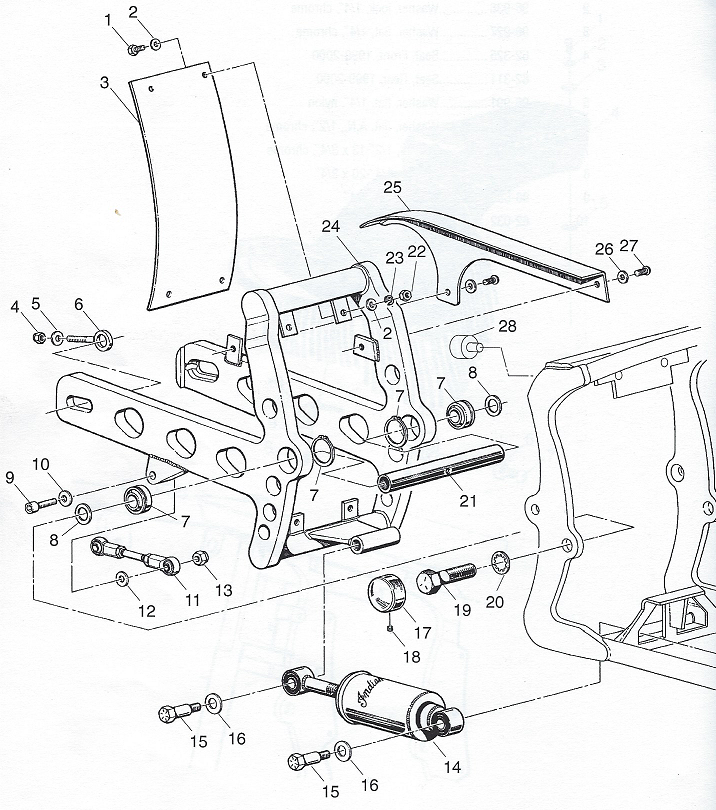
Pictures at the right is an early Scout/Spirit rear suspension system. Notice number 14 is the rear shock times two. Shocks for upgrades include, air shock systems made by Legend, Works, Progressive. These allow the rider to change the bikes ride height when loading the bike with a lot of gear. Standard replacement shocks can be upgraded to Works and Progressive. Due to the location of the shock, it makes it a challenge to adjust them. Progressive sells a system with a "Remote adjustable P reload system". This allows for easy tuning of the rear suspension.
2001 Scout/Spirit rear suspension
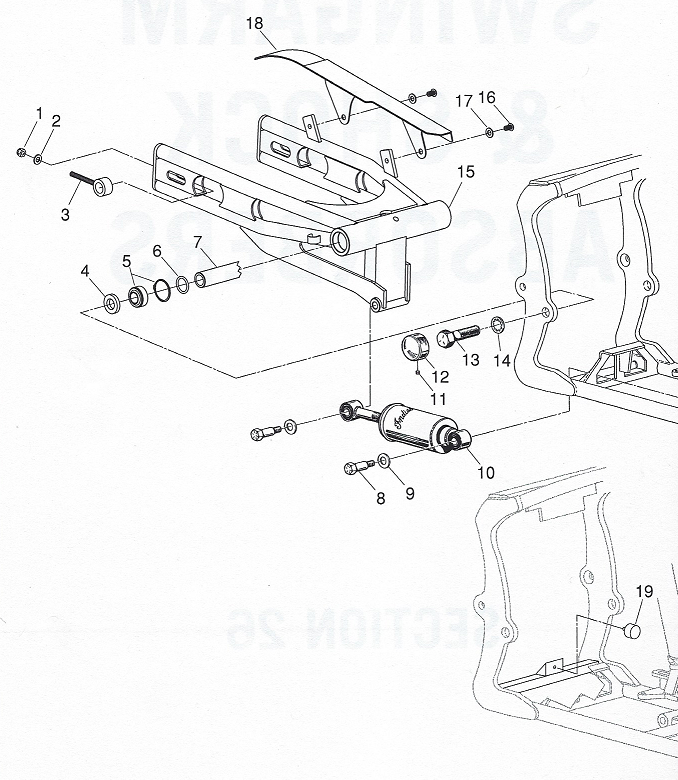
2002 and Later Scout/Spirit rear suspension
The main differences between the 2001 and the 2003 and later rear suspension can be seen in the design of the swing arm and the mounting of the swing arm. The bumper stops were move from above the swing arm center line to below the swing arm center line. The later swing arm was much stiffer then the previous design.
The early Chief models used a similar design as the traditional sift tail. It was more like the the 2001 Scout/Spirit design. as you can see, the swing arm is much more robust for the early Chief models due to the weight. Then in 2002 and later Indian produced the mono-shock rear suspension for the Chief. It is still considered a soft-tail design.
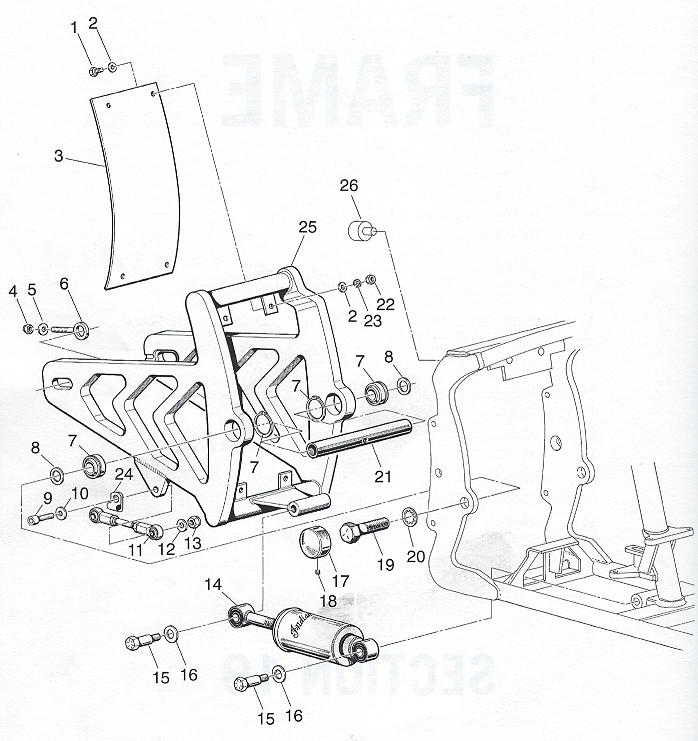
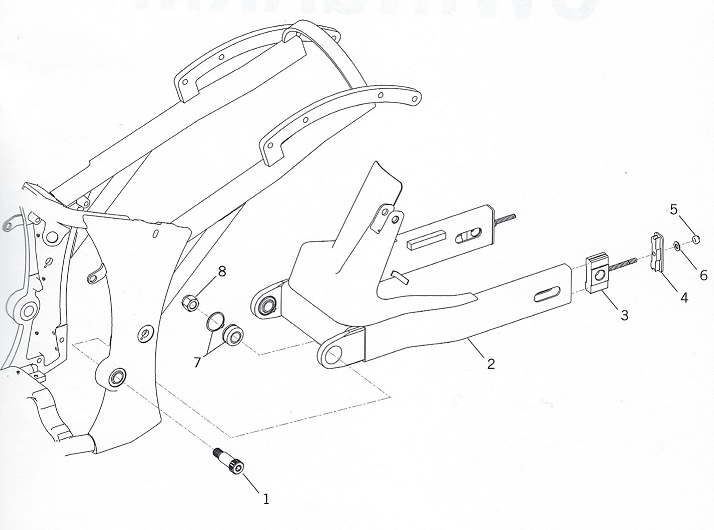
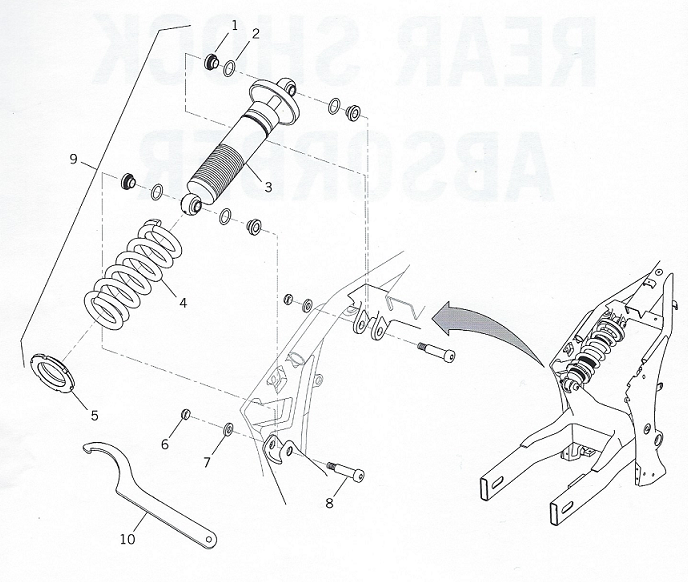
2002 and later Chief rear swing arm
2002 and later Chief rear mono-shock
Front suspension systems for all Indian models from 1999 to early 2000 came with "Showa" front forks. Later in 2000 and forward all the Indian Chief models used two types of front forks, starting with the "ILM" design. Fork tube were 41mm in diameter. The in mid-year of 2002, Indian began installing Paoli front forks. Both were good front forks. Main difference was the fork seals dimension was different and the upper and lower fork bushings were also different. As for the Scout and Spirit models, when they moved away from the Showa front forks to the American Fork Company. These were also a 41 mm fork tube as well. The triple tree assembly for them was also different from the one used for the Showa forks. The triple tree used on all of the models still used tapered Timken roller bearing which should be service and the bearing repacked every 10K miles. Fork oil should be changed every 10K as well. If you experience leaking from the fork seals, check the bushing in the lower fork legs and replace them as needed.